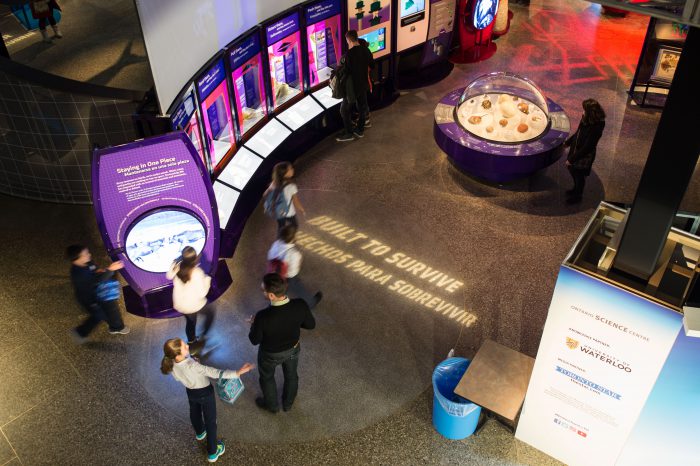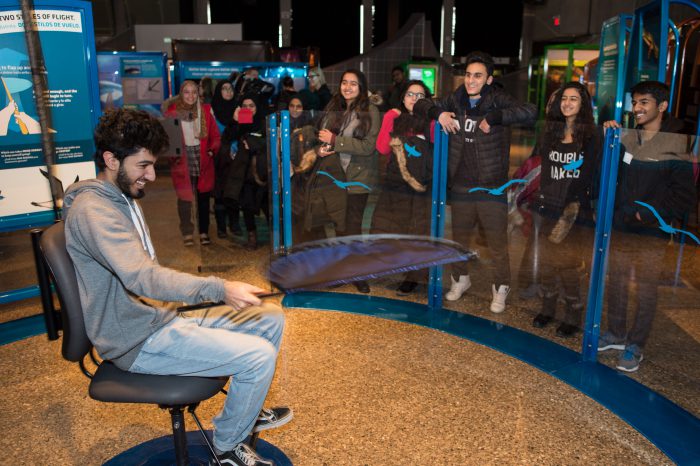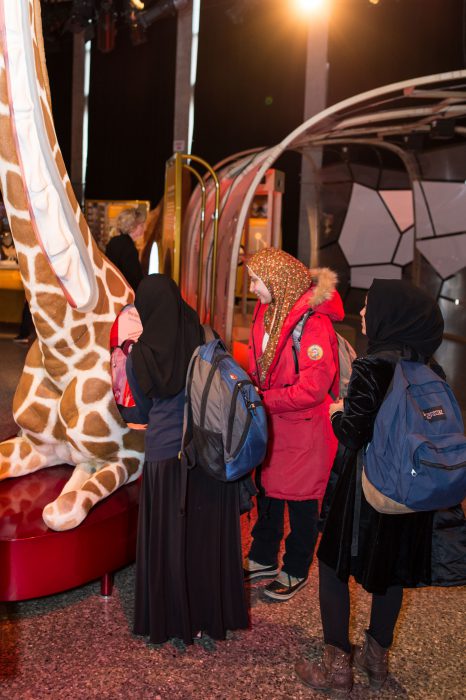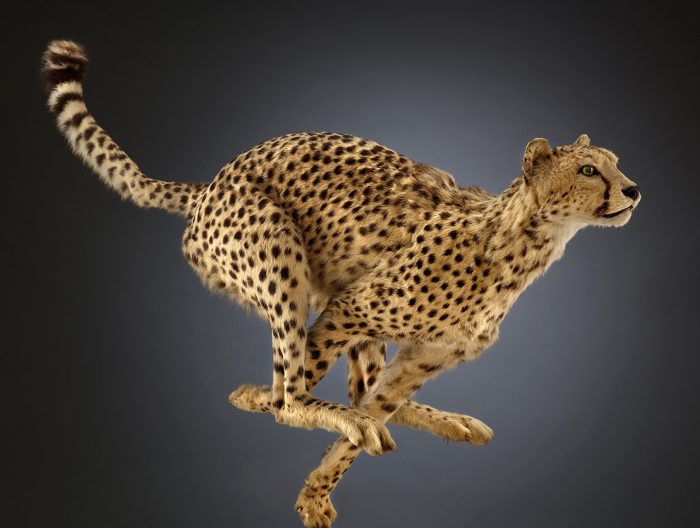We often think of nature and machines as opposites. Nature vs. technology. Human vs. machine.
Living things grow naturally. Machines are built by human hands, or artificially.
But there is a whole other way of looking at life as machines. It's called biomechanics. It is the subject of an amazing new exhibit, Biomechanics: The Machine Inside, at the Ontario Science Centre in Toronto that opened February 8th. And we got an opening day guided tour! What was it like? Let's discuss.
We are all living machines

The opening section at the brand new Biomechanics exhibit at the Ontario Science Centre. (Courtesy of Ontario Science Centre)
What is biomechanics exactly? Basically, it looks at all of the characteristics, abilities, and functions of animals and plants from the perspective of simple machines and materials. Okay, come again?
Living things encounter all sorts of problems that must be overcome to survive. Staying warm. Moving around. Making sounds to communicate. Defending territory. Cracking open tough shells to reach food. Pumping vital fluids. Catching prey. Running fast.
If you were an engineer designing a machine to perform any one of these tasks, you would use certain materials or start with a simple machine (these are things like wedges, gears, and pulleys).
Nature works the same way, perfecting its own "machines" through millions of years of evolution. This exhibit shows us exactly how that is true, and take it from us: it's fascinating!
Seven different sections

"Don't fly away!" You can test wing designs yourself at Biomechanics. (Courtesy of Ontario Science Centre)
The exhibit is broken into seven different sections, which slowly come together to make a complete picture of "natural machinery."
For example, Staying In One Piece looks at the structures and materials used to resist forces of gravity, wind, water, and everyday wear and tear. Grabbing a Bite: Jaws and Claws looks at the muscles and levers animal use to punch, gnaw, and grip their world (we were amazed at why the grip of a tiny crab can be so much more powerful than that of even the strongest person). Launching Into The Blue shows how different designs of wings and fins allow for everything from quick, maneuverable flight to long distance gliding. And that's just the tip of the iceberg.
Throughout it all, interactive elements let you feel the strength of a giraffe's heart, compare the strength and flexibility of different natural materials, try out wing designs, test your strength versus a chimpanzee's, and so much more.
Seeing the world differently

Students hand-pump a simulated giraffe heart to see the strength needed to get blood 9 metres (29.5 feet) straight up to its head. That's one strong heart! (Courtesy of Ontario Science Centre)
We loved this exhibit because it changed how we saw ourselves and all of the living things around us. Everything about our bodies — from the way our joints are placed, to the type of muscles that move them, to the materials that make our heart — has been chosen specifically to perform a certain task a certain way. Just as an architect chooses an arc shape to make her bridge strong. Or a contractor chooses materials to make a room warm.
We are all living machines!
Biomechanics: The Machine Inside is on loan to the Ontario Science Centre from the Field Museum in Chicago until May 7.
 The cheetah's speed comes thanks to a long, flexible spine that bends like a giant spring. It is just one of many features in this new exhibit. (Courtesy of Ontario Science Centre)
The cheetah's speed comes thanks to a long, flexible spine that bends like a giant spring. It is just one of many features in this new exhibit. (Courtesy of Ontario Science Centre)










Its Woderfull 😛 😳 ❓ ❗ 💡 🙄 😆 😥 😯 😎 😕 😐 😡 😮 😛 🙁 😀 😉 🙂